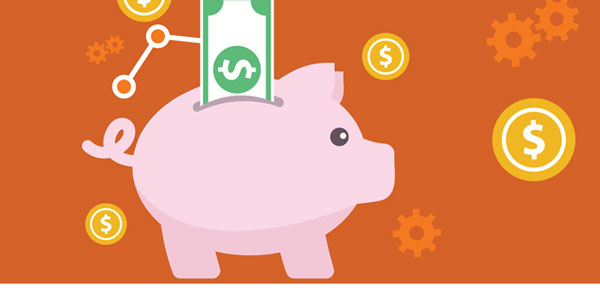The interest rate at which investors lend money to the United States Treasury is known as the "Treasury yield." The yield curve represents the relationship between these interest rates and their respective maturities. Market participants often look to Treasury Yields, especially the 10-year yield, as an indicator of investor confidence in the economy. Both prices and yields tend to go down over time. Investors are less likely to purchase Treasurys (a refuge in times of economic uncertainty) and more likely to purchase riskier assets (like stocks) when they have a more positive outlook on the economy.
As a result, Treasury rates increase, and prices fall. A rise in Treasury prices and a fall in yields occur when investors become increasingly concerned about the state of the economy and its future prospects. Treasury yields react to macroeconomic variables, including interest rates, inflation, and GDP growth. There is also a mutual impact among all these variables.
Economic Factors Affecting Treasury Yields
Economic Conditions
Bond prices often decline in bull markets as interest rates increase. In bear markets, bond prices often climb when interest rates start to fall. Bond yields tend to reduce when bond prices increase, and vice versa. When referring to bonds, "yield" refers to the interest rate paid out every year by the bond, also known as the "coupon." These bonds' prices increase and decrease in tandem with their age and demand. Fixed interest rates are issued on bonds.
Most investors choose investments with the best possible rate of return. Investors seek bonds with higher rates while new bond rates are low, but bond prices decrease when new bonds are issued at higher rates. Bond duration, the degree to which a bond's price fluctuates in response to changes in interest rates, is a key term connected to this definition.
Demand

When economic conditions are volatile, investors are more likely to seek out risk-averse financial products. The T-bills and T-notes issued by the United States government are regarded as the safest in the whole globe. Despite the possibility of a decline in profit from one year to the next, investors are willing to tolerate lower interest rates and yields because of the increasing demand for new or existing Treasuries.
Monetary Policy
There is more than one government use for bonds. Bonds and the interest rates they provide do more than just help people get their hands on cash; they also have a significant impact on the economy. The Fed does not manage long-term rates, although its policy on short-term rates creates the foundation for yields on longer-term government bonds.
The Federal Reserve maintained interest rates as low as they could be after the financial crisis of 2007–2008. This made it simpler for firms to get loans. The government paired rate cuts with asset buybacks in order to stimulate economic expansion. Quantitative easing describes this course of action. In the wake of the 2008–2009 financial crisis, it was adopted globally.
Supply
The primary purpose of government bonds is to facilitate the raising of funds. Funding programs, salaries, or debt payments all benefit from this influx of cash into the government's coffers. Since the United States had a surplus in its budget from 1998 to 2000, it has had less need to resort to borrowing money since then. Treasury notes and bond issuance will be reduced.
Inflation
Interest rates and bond yields often increase in tandem with inflation. There was a lot of inflation in the late 1970s and early 1980s, and that's what drove up interest rates. Paul Volcker, then-chairman of the Federal Reserve Board in the United States, responded by increasing short-term interest rates in the early 1980s. Keep in mind that in times of severe inflation, your true return will be lower than it first looks. Bond rates decrease as inflation increases. Yields on all types of Treasury securities went up as a consequence of Paul Volcker's substantial rate rise.
Interest Rates

Investors all across the world are concerned about Treasury rates. All other rates are calculated according to the yield on the U.S. Treasury. Given the size and wealth of the United States government, Treasury Notes are often regarded as the most secure form of investment available. The demand for Treasuries rises as the federal funds rate falls because investors want to secure their funds at a lower interest rate. There is a direct correlation between the decline in interest rates and the rise in demand for Treasuries.
Conclusion
As investors fled bonds in March due to inflationary concerns, Treasury Yields rose. The value of fixed, long-term rates decrease when inflation rises, and this has led to speculation that the Federal Reserve of the United States may increase the magnitude of its anticipated rate increases.











